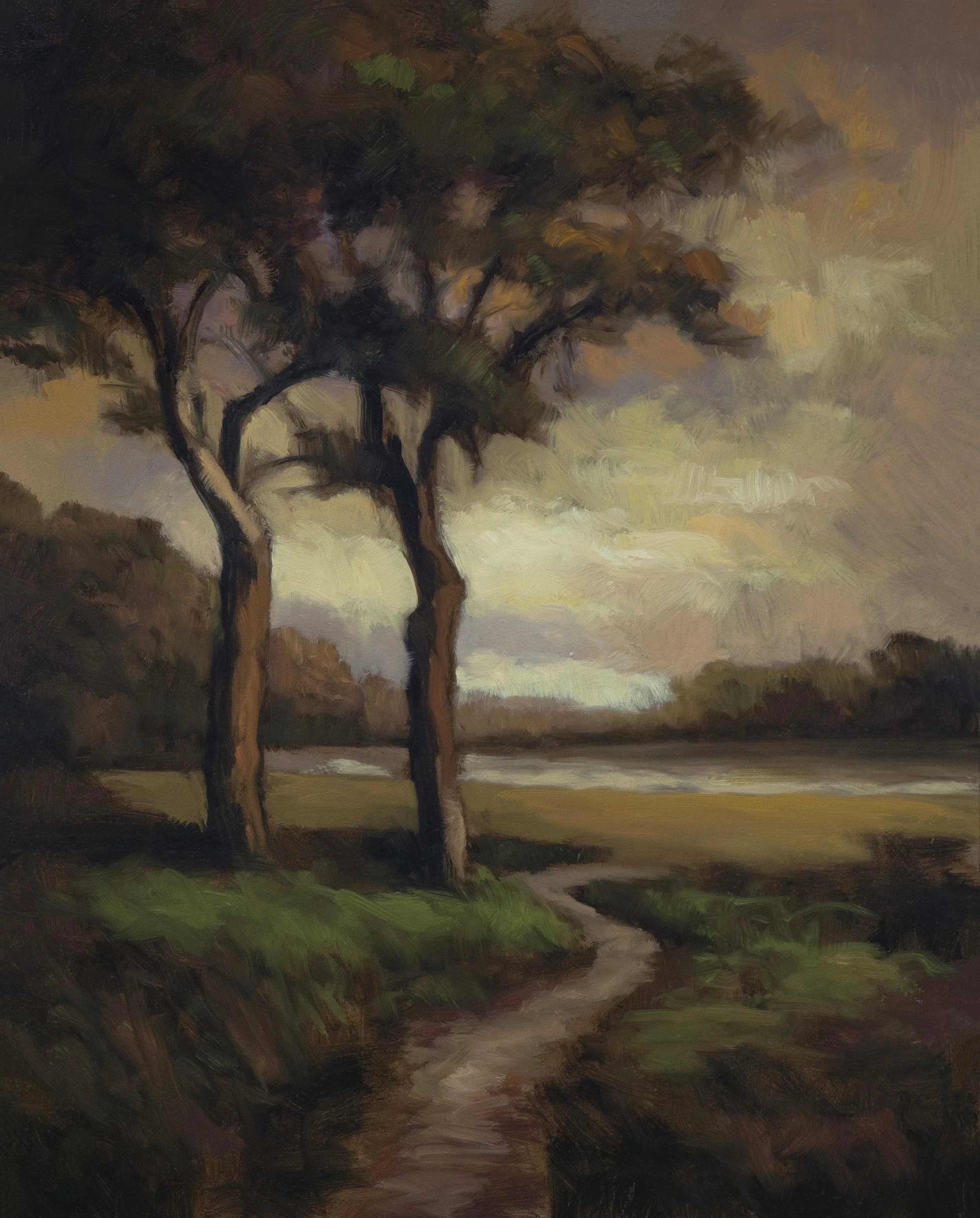Where Light Lingers 8x10
Working with a Looser Approach
You'll notice I'm not using a big brush here - that's a size four, though in the live session I think I called it a six. Sometimes I go even smaller, down to a two or even little stubbies, depending on what the painting calls for. The whole idea with this piece was about brush fracture and brush interaction - bringing things in with a loose and free manner. I've been experimenting with keeping my drawing and underpainting looser lately, giving myself more room to work during the actual painting session. There's something really appealing about that soft quality you get when it's just the brown over the board color. That look has a certain magic to it.
Where Light Lingers 8x10
The Reality of Personal Style
As the painting progressed, even though I was trying to keep everything very soft and loose, it took on more of a graphic sensibility. That's just a byproduct of how I approach things - that design aspect is something you'll find hard to escape. I often tell new students who come to me asking about finding their style: you'll know you have a good style when you can't escape it. It’s part of who you are as a painter.
Color Mixing on the Fly
All the color mixing in this painting was done as I worked - no pre-mixing this time. Sometimes that's the right approach, especially when the day is getting away from you and you want something to show for the week. While I do think pre-mixing has its place (it's great for filling time in the late morning when you're planning to paint in the afternoon), working directly can have its own energy.
The Tonalist Color Approach
This was Tonalist colors all the way - a dedicated homage to George Inness. The sky work involved some dioxazine purple, which gives you a quality that's hard to get any other way, but I had to really restrain it. What you're seeing is a subtle complementary purple-yellow riff that creates that atmospheric quality. The greens were extremely important but restrained. My whole brief was to be 100% tonal with the color approach, which means the restriction of the value structure is critical. You can bring in bright greens, but it's important that they have a restrained redness to them - that's definitely one of the hallmarks of Tonalism.
Mikes Book
This approach to ground color and tonal harmony is covered extensively in my book 'Landscape Painting the Tonalist Way' - one of those foundational concepts that affects every painting decision that follows.
A Quick Green Tip
If you're struggling with greens and wondering why they don't look good in your paintings, get yourself some burnt sienna or red iron oxide and add a little bit to your green mixture. You'll often think it's not changing much except maybe making it oddly saturated, but if it goes too far, just bring a little more of your green mixture back in. The green mixture I recommend is what I call Mike's Green - essentially arylide yellow (PY73 or 74) and ivory black. A lot of paints called "cad yellow hue" are actually arylide yellow and will work perfectly. When that yellow hits the black, you can see the true green property of the yellow come through, plus the bluish properties of the ivory black.
The Ground Color Foundation
I'm working on what I call "deep earth" - a clay-toned ground color that's wonderful for landscape painting because you can leave a lot of it peeking around. I've experimented with many different ground colors over the years (it's all documented on the channel), but this one works beautifully because what you're painting is, after all, the landscape.
Substack Members
This 15-minute demonstration captures the essence of the process, but for those wanting the complete experience, the full live painting session is available in the Substack paid community featuring the reference photo, color palette and readable transcription of the Live painting process
Bringing It All Together
The whole approach here was a loose block-in, but the block-in IS the painting. A lot of the underpainting is still coming through, and I think that's what gives it that unified quality. When I brought in the greens down below, I made sure to bring a little bit up into the trees too - it's good to spread things around and create that visual connection. This painting represents where I am right now in my tonal journey - loose, expressive, but still grounded in the principles that make Tonalism so compelling. It's about capturing not just what you see, but the feeling of where light lingers in the landscape.
Until next time, take good care of yourself, your family, and all your loved ones. Stay out of trouble!
Mike
